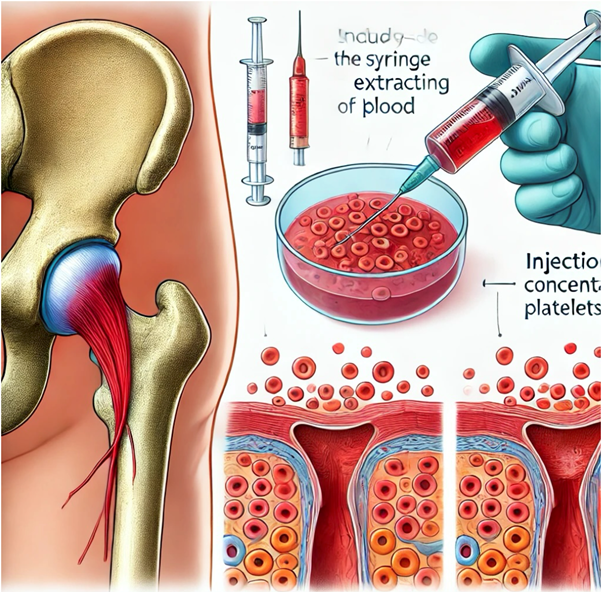Email : admin@mskdoc.co.nz | Phone : 02727 00100
Opening Hours : Mon-Friday : 10 AM – 4 PM
Email : admin@mskdoc.co.nz | Phone : 02727 00100
Opening Hours : Mon-Friday : 10 AM – 4 PM
Email : admin@mskdoc.co.nz | Phone : 02727 00100 | Opening Hours : Mon-Friday : 10 AM – 4 PM
By: Dr Zaid Matti
Musculoskeletal Medicine Specialist
MBChB, PgDipMSM Otago, PgDipSurgAnat Otago
The condition results from repetitive stress, degeneration, or inflammation of the tendons of the gluteal muscles, potentially leading to persistent pain and reduced mobility.

Patients typically experience persistent pain in the lateral hip region, exacerbated by activities like walking, stair climbing, or lying on the affected side. Without appropriate intervention, it may progress to chronic discomfort, impairing mobility and overall quality of life.
Platelet-Rich Plasma (PRP) therapy is a regenerative medical treatment that employs a concentrated solution of a patient’s own platelets, derived from their blood. Rich in growth factors, PRP promotes the body’s innate healing processes, accelerating tissue repair and reducing inflammation.
In gluteal tendinopathy, tendons suffer degeneration, inflammation, and microtears. PRP therapy specifically targets these damaged areas, enhancing natural tissue repair, reducing inflammation, and potentially reversing degenerative changes.
The procedure for PRP therapy is straightforward and minimally invasive:
1. Blood Collection: A small blood sample is drawn from the patient’s arm.
2. Platelet Concentration: The blood is processed to concentrate the platelets.
3. Injection: Under precise imaging guidance, the PRP is injected directly into the affected area.
Patients typically experience minimal discomfort, with the entire session lasting around 45 minutes. Normal, gentle activities can usually resume within days, while complete recovery and the full benefits might become apparent over weeks to months.
Multiple studies underline the effectiveness and advantages of PRP therapy for gluteal tendinopathy:
• Fitzpatrick et al. (2017) highlighted significant pain reduction and improved function after PRP injections.
• Zanon & Gasparini (2019) demonstrated PRP’s superiority over placebo treatments, resulting in enhanced patient outcomes.
• Multicenter reviews, such as those by Mautner et al. (2019), found PRP effective in providing lasting symptom relief and functional improvement compared to traditional therapies like corticosteroids and physiotherapy.
PRP offers distinct advantages:
• Regenerative Capability: Unlike corticosteroids, PRP promotes genuine tissue healing.
• Longer-Lasting Relief: Patients often experience extended periods of symptom relief.
• Safety and Minimal Side Effects: The use of a patient’s own platelets minimizes adverse reactions and ensures high safety standards.
If traditional treatments have provided limited relief or you seek a natural, regenerative approach to treating gluteal tendinopathy, PRP therapy may be the ideal solution. Consult your healthcare provider to explore whether PRP therapy is appropriate for your individual health needs and goals.
• Fitzpatrick, J., Bulsara, M., & Zheng, M. H. (2017). The effectiveness of platelet-rich plasma in the treatment of gluteal tendinopathy. American Journal of Sports Medicine.
• Zanon, R. G., & Gasparini, D. (2019). Platelet-rich plasma for gluteal tendinopathy: A randomized controlled trial. Clinical Rehabilitation.
• Mautner, K., Colberg, R. E., Malanga, G., et al. (2013). Outcomes after ultrasound-guided platelet-rich plasma injections for chronic tendinopathy: A multicenter, retrospective review. PM&R.